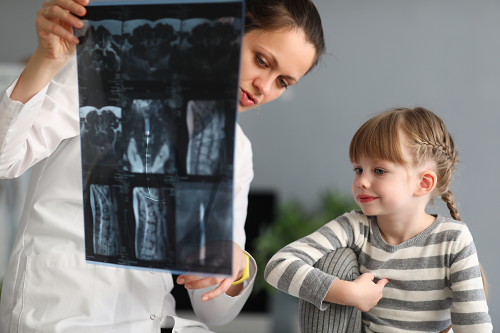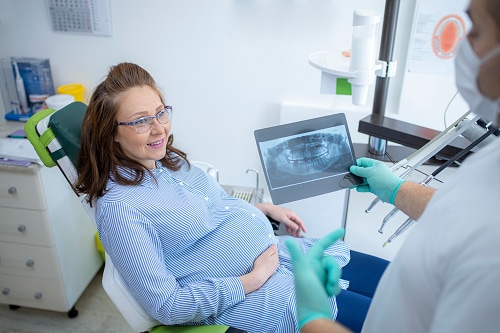At a glance
The benefits of imaging procedures usually outweigh the risk of radiation exposure. However, children and women who are pregnant should have limited exposure to radiation. You can discuss your options with your healthcare provider and take steps to limit radiation exposure.

The basics
In many cases, the risk of an imaging procedure to a woman who is pregnant and the unborn child is very small compared to the benefit of finding out about a medical concern. However, even small risks should not be taken if they are unnecessary.

Always tell your healthcare provider and radiologist (a medical professional certified to conduct imaging studies with radiation) if you are pregnant or think you could be pregnant. If there is any chance you could be pregnant but have not confirmed it, they may ask you to take a pregnancy test. If you are pregnant your healthcare provider may decide that it would be best to cancel the medical imaging procedure, to postpone it until after you give birth, or to modify it to reduce your exposure to radiation.
Children are slightly more likely to be affected by radiation than adults. Children are still growing, and their cells are quickly dividing and multiplying, so radiation can more easily interfere with cell growth and development than in adults.
Common Questions
- Imaging done on most parts of the body, such as arms, legs, teeth, and chest, does not expose the unborn baby to radiation.
- Imaging of the midsection—such as the abdomen, stomach, pelvis, lower back, or kidneys— may expose the unborn baby to radiation.
- Doctors will assess how far along you are in your pregnancy to determine potential risks to the pregnancy.
You can discuss your options with your healthcare provider and take steps to limit your exposure to radiation.
Cancer caused by radiation exposure takes several years to develop. Being exposed at a young age means there is more time for radiation exposures to add up and possibly cause cancer. It is important that imaging procedures performed on children use the least amount of radiation needed.
You can take these steps to limit the amount of radiation your child is exposed to:
- Ask your healthcare provider or radiologist whether their facility lowers radiation doses when examining children, adjusted for size and age of the child.
- Be sure to tell your healthcare provider about previous imaging your child has had to avoid repeating or unnecessary testing.
- Ask about other imaging methods (such as ultrasound or MRI) that do not use radiation when possible.
The FDA provides information for parents and healthcare providers about the benefits and risks of medical imaging procedures for children.
